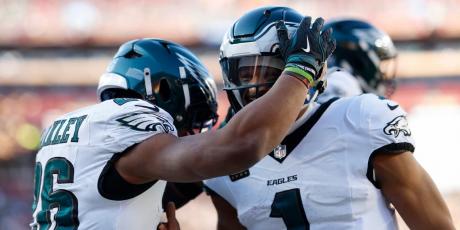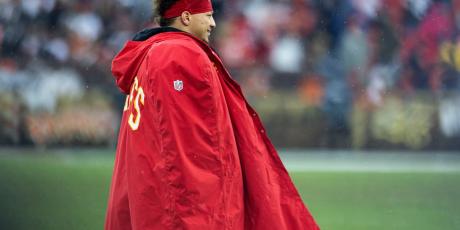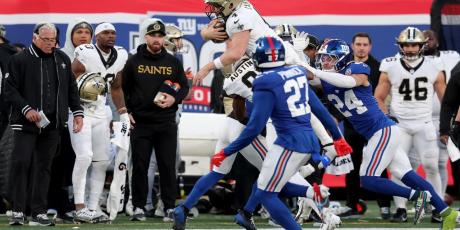The Training Room: Week 2 Injury Updates

Fantasy football fans all across the nation rejoice, as the season is officially under way! I’m sure the nerves, anxiousness, and fear of how your team performed could be making you question the moves you made when you drafted. Take a deep breath in….and exhale. It’s only Week 1, no need to overreact just yet, but it’s always good to stay informed. Staying on top of the waiver wire to shore up some areas on your team is how you become a consistent threat each week. The training room was pretty busy in Week 1, let’s look at some names that you’ll want more information on to determine if you need some help:
Tyler Eifert
Dislocated Elbow: The elbow is made up of your humerus (long bone of upper arm) and the two bones in your forearm, the radius and ulna. A dislocation occurs when either the humerus or the ulna/radius come out of normal alignment and stay out of alignment due to a traumatic force. Eifert sustained the injury in the first half against the Ravens and did not return.
Bottom Line: Dislocated elbows are pretty gruesome as Eifert’s elbow looked ugly when the injury occurred. The fact that they were able to reduce the dislocation soon after it happened is always a good sign, as it reduces the overall strain on the surround ligaments and cartilage in the elbow. Eifert will miss a few weeks and will most likely return with a brace to help protect the elbow. Jeremy Kerley suffered a dislocated elbow in Week 9 last year, and returned in Week 14, so it’s possible Eifert could miss that much time, or possibly less. I wouldn’t expect too many lingering issues once he returns but keep an eye on him to make sure he’s progressing properly through rehab. He's not worth holding through the injury outside of very deep formats.
Doug Martin
Sprained Knee: There are many structures in the knee that can be injured either from repetitive overuse or from blunt trauma to the knee. Martin’s knee was injured when another played landed on it. He went to the locker room to get the knee examined and returned, but played sparingly the rest of the game.
Bottom Line: Owners that spent an early round draft pick on the Muscle Hamster have to be disappointed with his early injury. Martin’s knee was heavily wrapped with ice after the game and will undergo more testing to determine the severity of the injury. The fact that he wasn’t able to fully return to action after sustaining the injury isn’t a good sign for his Week 2 prospects. Keep an eye on any updates on our website to make sure he’s participating in some sort of practice activity throughout the week.
Ben Tate
Sprained Knee: See Doug Martin, Tate was injured in the 2nd quarter against the Steelers and did not return.
Bottom Line: You knew the risk was there, it was just a matter of when Tate would get hit with the injury bug. The fact that it’s only Week 1 and he’s already dealing with a knee injury does not give me confidence in his ability to stay healthy throughout the season. Since the Browns failed to update what exactly is wrong with Tate’s knee, keep an eye on our website to get the latest information as to what Tate is dealing with.
Alshon Jeffery
Hamstring Strain: The hamstring muscle is the primary muscle in the back of the thigh responsible for bending the knee and extending the hip. When it relates to sports, it's a very important muscle in aiding to accelerate/decelerate the lower body to allow proper running and cutting.
Bottom Line: Jeffery was in and out of the game as it seemed that whenever he tried to rev it up, his hamstring acted up on him. Coach Trestman seems pretty confident that his hamstring injury is nothing serious, and I would agree with that sentiment, as Jeffery seemed to be moving around fine. He’ll probably miss some practice time early on in the week but should be good to go for Week 2.
Jordan Reed
Hamstring Strain: See Alshon Jeffery. Reed left the game after attempting to hurdle a player and landed awkwardly on the leg.
Bottom Line: Reed is set to get an MRI which will reveal how severe his strain is. Depending on what the MRI shows, a higher grade strain could mean a multi-week recovery, so prepare to make the necessary moves to fill in for him. Re-injury rate are always a risk with hamstrings, and the fact that he’s already dealt with a thumb issue makes Reed a risky play on a week to week basis. He's a borderline stud when he's full go, but will force tough roster decisions if he's still out when the BYE weeks roll around.
Jordan Cameron
Acromioclavicuar Joint Sprain: Direct trauma to the acromioclavicular (AC) joint cause disruption of the ligaments around the area that help support it. Normally an AC joint sprain is caused when falling directly on the shoulder.
Bottom Line: Re-aggravation to the AC joint is pretty painful, especially since it seems that Cameron was still working his way back to full health. The trouble with the AC joint is it is strained heavily when attempting to reach the arm across the body, but also when attempting to reach overhead, especially at the limits of the shoulder. Quick jolts such as blocking, catching, and taking hits will only irritate the tissue so it’ll be a matter of pain tolerance that will allow Cameron to get back onto the field. I wouldn’t completely rule him out for this upcoming week’s game, but it wouldn’t surprise me if the Browns wanted to hold him out. Early in the season you want to be competitive, but you also want to reduce any chance of losing your main offensive weapons for an extended period of time.
Toby Gerhart
Ankle Sprain: An inversion sprain is often referred to as "rolling" your ankle. The ligaments/tendons/muscles on the outside of the ankle get overstretched and cause pain/swelling. Gerhart was tackled from behind which caused his ankle to roll. He left the game after the injury, had his ankle re-taped, and was able to contribute a little bit the rest of the day.
Bottom Line: It was a good sign for owners that Gerhart tried to push through the pain and was able to finish the game. Gerhart will more than likely miss some practice time to get his pain under control, but make sure he’s able to at least get some limited reps in during the week to feel confident rolling him out for Week 2. Ankle sprains are risky for possible aggravation, so this is a situation to monitor.
Andre Ellington
Peroneus Longus Strain: The peroneus longus is a muscle on the outside part of your calf that wraps around your lateral malleolus (outer ankle bone) and inserts into the foot. The main function is to help with flexing the foot and also turning the foot outwards.
Bottom Line: Even though the peroneus longus isn’t a very big muscle, whenever you have a small tear it can generate pain with even the simplest movements. It sounds like the Cardinals are going to try and manage this conservatively as they’ll try and do rehab to help strengthen the area to improve his tolerance to any running or cutting. The chances of him being completely recovered are going to be tough, especially if he continues to play on a weekly basis, but the Cardinals have a Week 4 bye which should help his cause.
Shaun Hill
Strained Quadricep: The quadricep is the main muscle in the front of the thigh. It’s responsible to help straighten the leg and stabilize the leg (in addition other muscles) when fully putting weight through the leg. Most quadriceps strains occur either in the middle of the muscle belly or towards the insertion point down by the knee. Hill was forced out of the game after the first half against the Vikings and did not return.
Bottom Line: The Rams offense was pretty bad when Hill was under center, and remained so when he went out with the injury. Quad strains are troublesome due to NFL players constantly demanding the muscles in the thigh be working as efficiently as possible. There’s not much competition with Hill since Sam Bradford was put on the IR, so if Hill is healthy he will start. He’ll more than likely be limited during the week, but I would expect Hill to be ready to start Week 2 barring any setbacks.






















